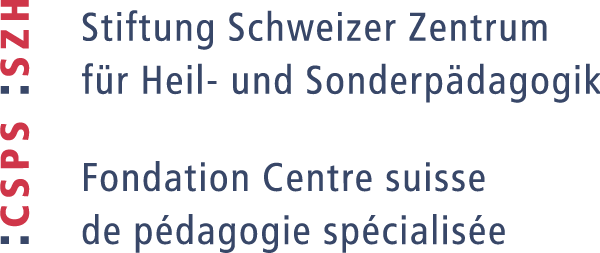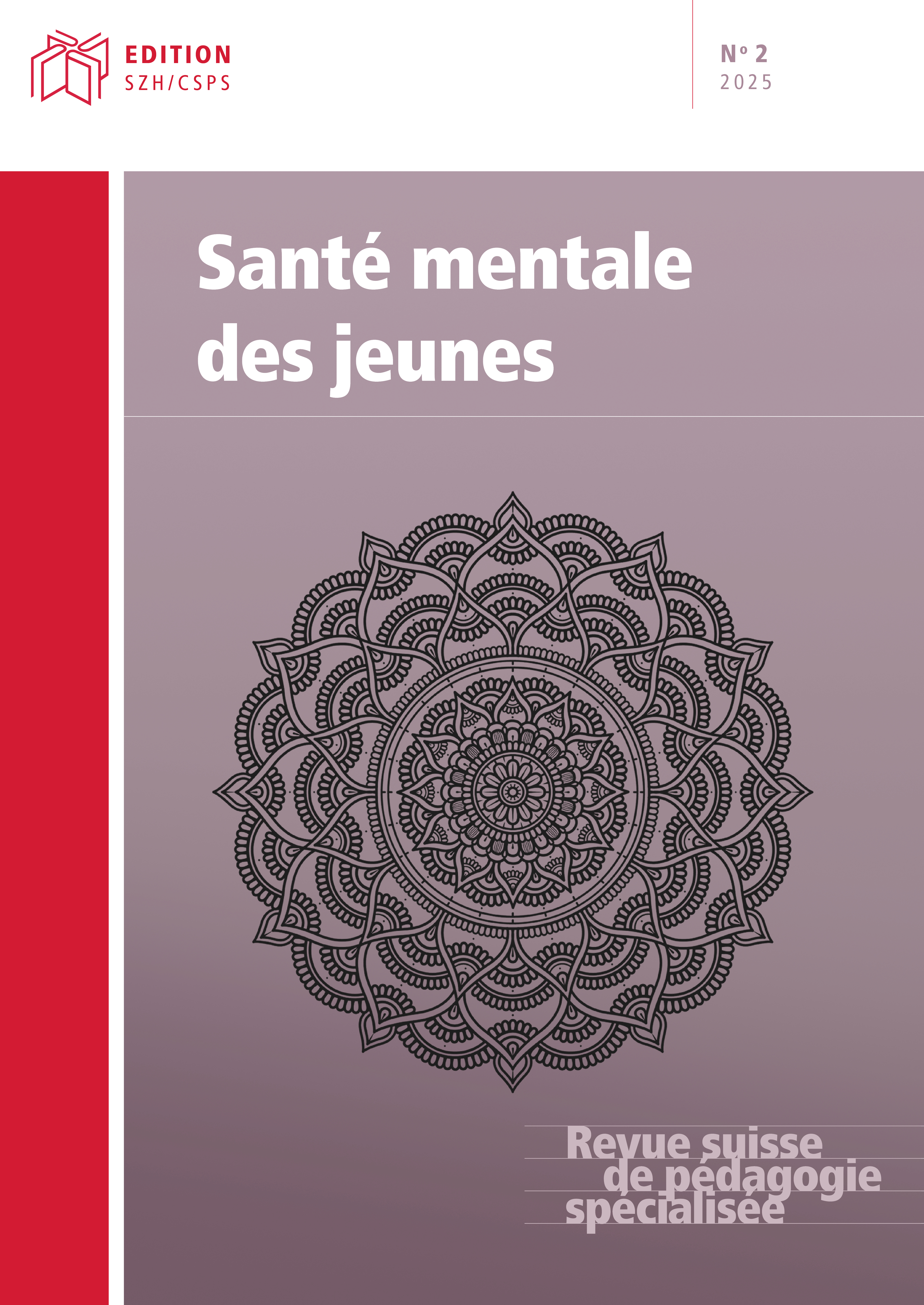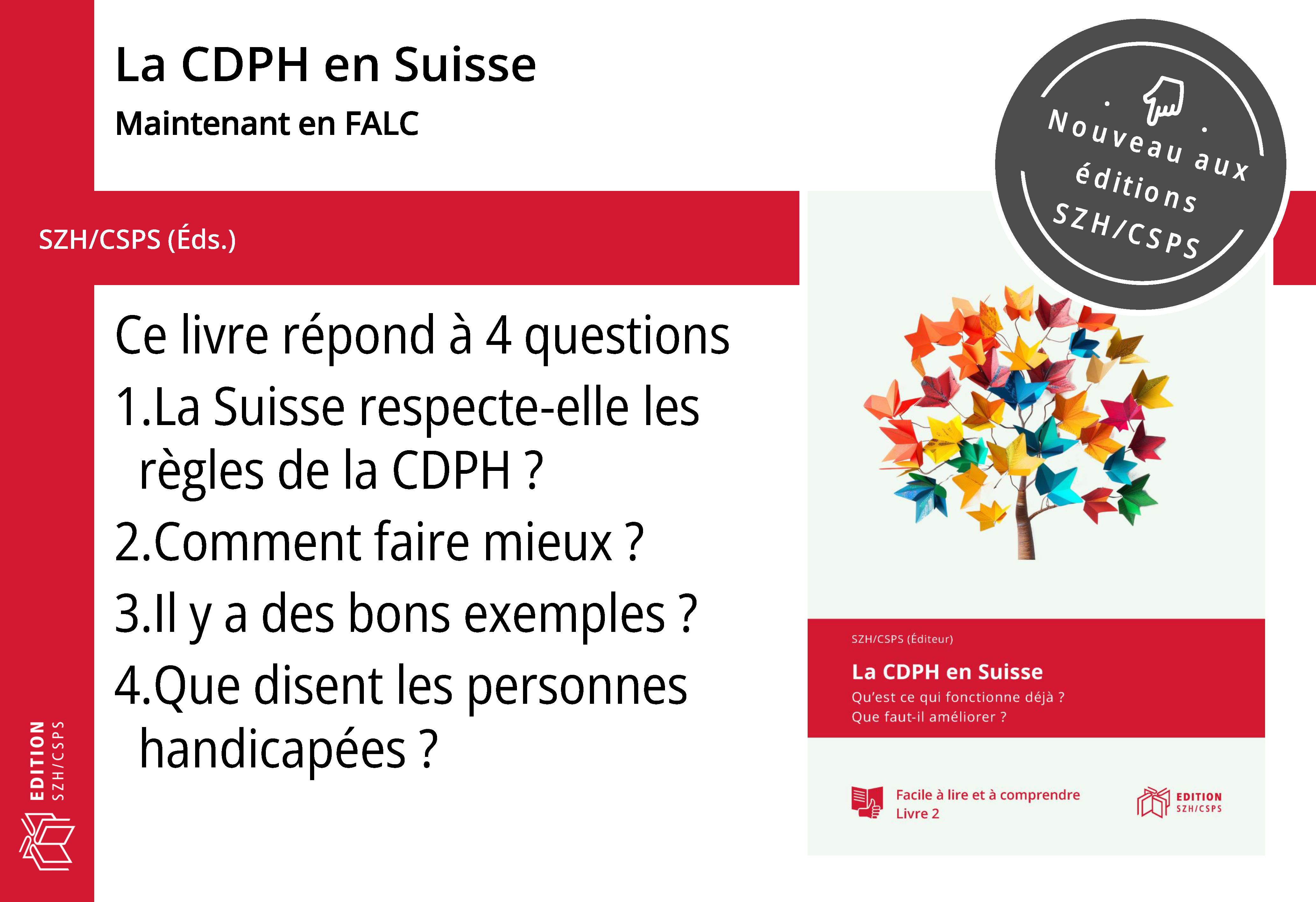Les caractéristiques des enfants des classes régionales de la pédagogie spécialisée lors d’une activité collaborative
DOI:
https://doi.org/10.57161/r2025-02-03Schlagworte:
motorische Kooperation, nichtverbale Kommunikation, Schüler mit besonderen Bedürfnissen, soziale integrationAbstract
In der Schweiz zielen Sonderklassen in Regelschulen (les classes régionales de pédagogie spécialisée [CRPS]) darauf ab, Kinder in die Regelschule zu integrieren. Eine explorative Vergleichsstudie untersucht, inwiefern sich die nonverbalen Kommunikationsfähigkeiten und die motorische Kooperation während eines Konstruktionsspiels bei Kindern in Sonderklassen und Kindern in Regelklassen unterscheiden. Die Ergebnisse zeigen, dass bei Kindern aus Sonderklassen die nonverbale Kommunikation unorganisierter und die motorische Kooperation weniger effizient sind. Um Kinder aus Sonderklassen stärker sozial zu integrieren, wäre es wichtig, genau diese Fähigkeiten – Zusammenarbeit und nonverbale Kommunikation – gezielt zu fördern.
Literaturhinweise
American Psychological Association (APA). (2023). Child with special needs. https://dictionary.apa.org/child-with-special-needs.
Aguirre Oar, J.M., & Guimon Ugatechea, J. (1994). Vie et Œuvre de Julián de Ajuriaguerra. Masson.
Bratman, M. (2014). Shared Agency: A Planning Theory of Acting Together. Oxford University Press.
Canton de Vaud. (2019). Concept 360, Concept cantonal de mise en œuvre et de coordination des mesures spéci-fiques en faveur des élèves des établissements ordinaires de la scolarité́ obligatoire. https://www.vd.ch/fileadmin/user_upload/organisation/dfj/dgeo/fichiers_pdf/concept360/Concept_360.pdf
Canton de Vaud. (2023). Cadre Cantonal des CRPS, classes régionales de la pédagogie spécialisée.
Chaminade, T., Marchant, J-L., Kilner, J., & Frith, C.D. (2012). An fMRI study of joint action–varying levels of cooperation correlates with activity in control networks. Frontiers in Human Neuroscience, 6(179), 1-11. https://doi.org/10.3389/fnhum.2012.00179
Chebli, S.S., Martin, V. & Lanovaz, M. (2016). Prevalence of stereotypy in individuals with developmental disa-bilities: a systematic review. Review journal of autism developmental disorders, 3(2),107-118. https://doi.org/10.1007/s40489-016-0069-x
De Ajuriaguerra, J. (1953). Langage, geste, attitude motrice. Librairie Maloine.
DeVito, J.A. (2002). Human Communication. Pearson.
Frandji, D., & Rochex, J-M. (2011). De la lutte contre les inégalités à l’adaptation aux « besoins spécifiques ». Éducation et formations, 80, 95-108. https://www.education.gouv.fr/sites/default/files/imported_files/document/Depp-EetF-2011-80-lutte-inegalites-adaptation-besoins-specifiques_203302.pdf
Girardot, A.M., De Martino, S., Rey, V., & Poinso, F. (2009). Étude des relations entre l’imitation, l’interaction sociale et l’attention conjointe chez les enfants autistes. Neuropsychiatrie de l’Enfance et de l’Adolescence, 57(4), 267-274. https://doi.org/10.1016/j.neurenf.2008.09.009
Guralnick, M. J. (2010). Early intervention approaches to enhance the peer-related social competence of young children with developmental delays: A historical perspective. Infants & Young Children, 23(2), 73-83. https://doi.org/10.1097/iyc.0b013e3181d22e14
Houdé, O. (2010). Aux origines du dialogue des cultures chez l’enfant. In A. Berthoz, C. Osolla & B. Stock (Eds.), La pluralité interprétative, fondements historiques et cognitifs de la notion de point de vue (pp. 153-160). Collège de France.
Lanners, R. (2025). L’intégration avant la séparation selon nos statistiques. Revue suisse de pédagogie spéciali-sée, 15(2), 59-70. https://doi.org/10.57161/r2025-02-09
Milward, S.J., & Sebanz, N. (2018). Imitation of coordinated actions: How do children perceive relations be-tween different parts? PLoS ONE, 13(1), e0189717. https://doi.org/10.1371/journal.pone.0189717
Noël, I. (2020). Qui sont les élèves à besoins éducatifs particuliers ? La part d’aléatoire du signalement pour une mesure d’aide renforcée de pédagogie spécialisée dans un canton suisse. ALTER, European Journal of Disability Research, 15(2), 153-164. https://doi.org/10.1016/j.alter.2020.11.001
Organisation Mondiale de la Santé [OMS]. (2022). Santé mentale : renforcer notre action. https://www.who.int/fr/news-room/fact-sheets/detail/mental-health-strengthening-our-response
Piek, J., Rigoli, D., Pearsall-Jones, J.G., Martin, N.C., Hay, D.A., Bennett, K.S., & Levy, F. (2007). Depressive Symp-tomatology in Child and Adolescent Twins With Attention-Deficit Hyperactivity Disorder and/or Developmental Coordination Disorder. Twin Research and Human Genetics, 10(4), 587-96. https://doi.org/10.1375/twin.10.4.587
Puyjarinet, F., Bégel, V., & Dalla Bella, S. (2017) Déficits temporels et rythmiques dans le TDA/H. In J. Marquet-Doléac, R. Soppelsa & J.M. Albaret (Eds.), Les entretiens de psychomotricité (pp. 1-8). Europa Digital & Publishing.
Soares, E.M., & Serrano, A.M (2014). Peer relations: The challenges of children with special needs. Revista de Investigación en Logopedia, 4(1), 67-92. http://dx.doi.org/10.5209/rlog.58662
Soppelsa, R., & Albaret, J-M. (2011). Situation de la psychomotricité. In P. Scialom, F. Giromini & J-M. Albaret, Le manuel d’enseignement de psychomotricité (pp. 11-23). Deboeck supérieur.
Tomasello, M. (2014). The ultra-social animal. European Journal of Social Psychology, 44(3), 187-194. https://doi.org/10.1002/ejsp.2015
Török, G., Pomiechowska, B., Csibra, G., & Sebanz, N. (2019). Rationality in Joint Action: Maximizing Coeffi-ciency in Coordination. Psychological Science, 30(6), 930-941. https://doi.org/10.1177/0956797619842550
Török, G., Stanciu, O., Sebanz, N., & Csibra, G. (2021). Computing Joint Action Costs: Co-Actors Minimize the Aggregate Individual Costs in an Action Sequence. Open Mind: Discoveries in Cognitive Science, 5, 100–112. https://doi.org/10.1162/opmi_a_00045
Uzgiris, I. C. (1981). Two Functions of Imitation During Infancy. International Journal of Behavioral Development, 4(1), 1-12. https://doi.org/10.1177/016502548100400101
Vesper, C., Butterfill, S., Knoblich, G., & Sebanz, N. (2010). A minimal architecture for joint action. Neural Net-works, 23(8-9), 998-1003. https://10.1016/j.neunet.2010.06.002
Veröffentlicht
Zitationsvorschlag
Ausgabe
Rubrik
Lizenz
Copyright (c) 2025 Marion Duret, Isabelle Carchon

Dieses Werk steht unter der Lizenz Creative Commons Namensnennung 4.0 International.



